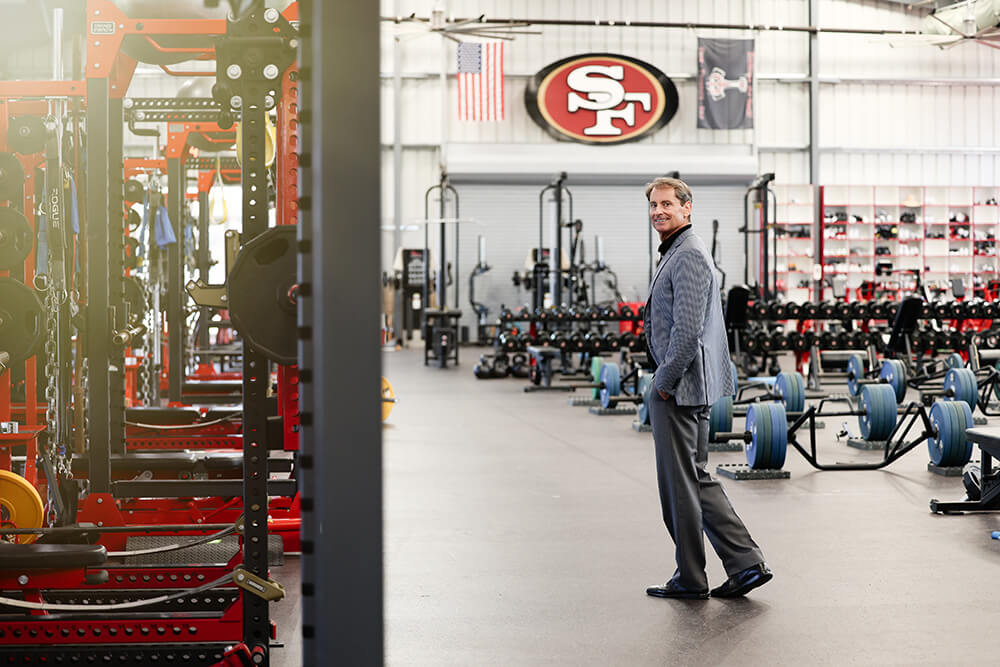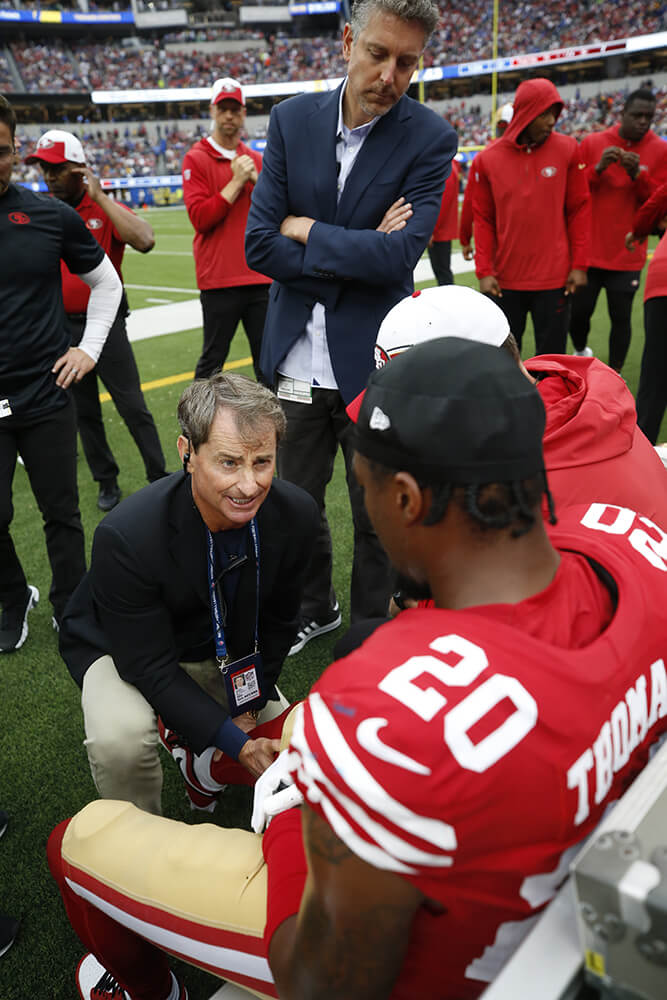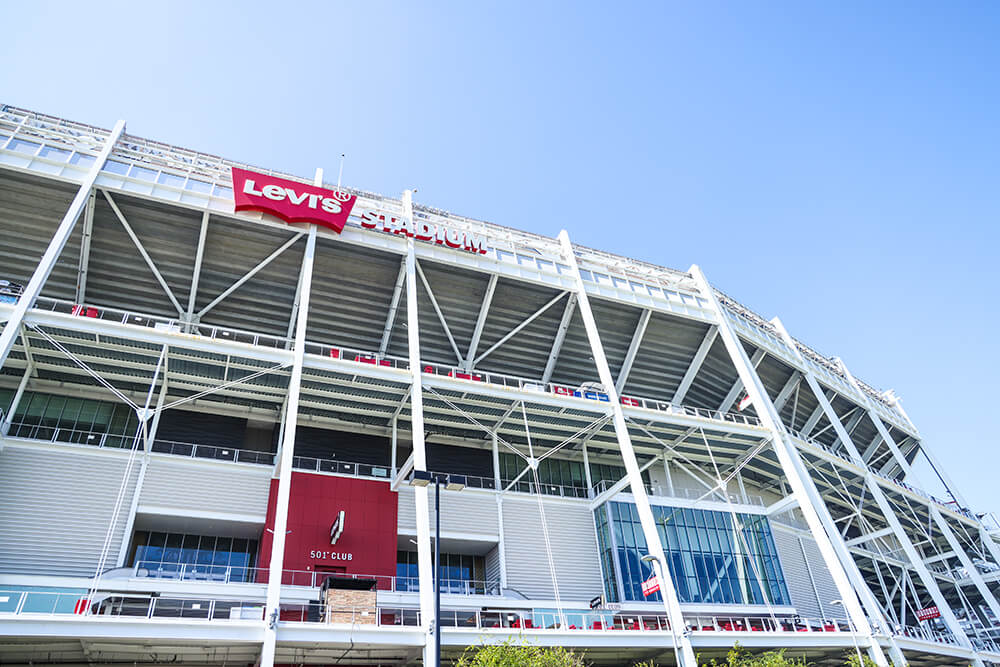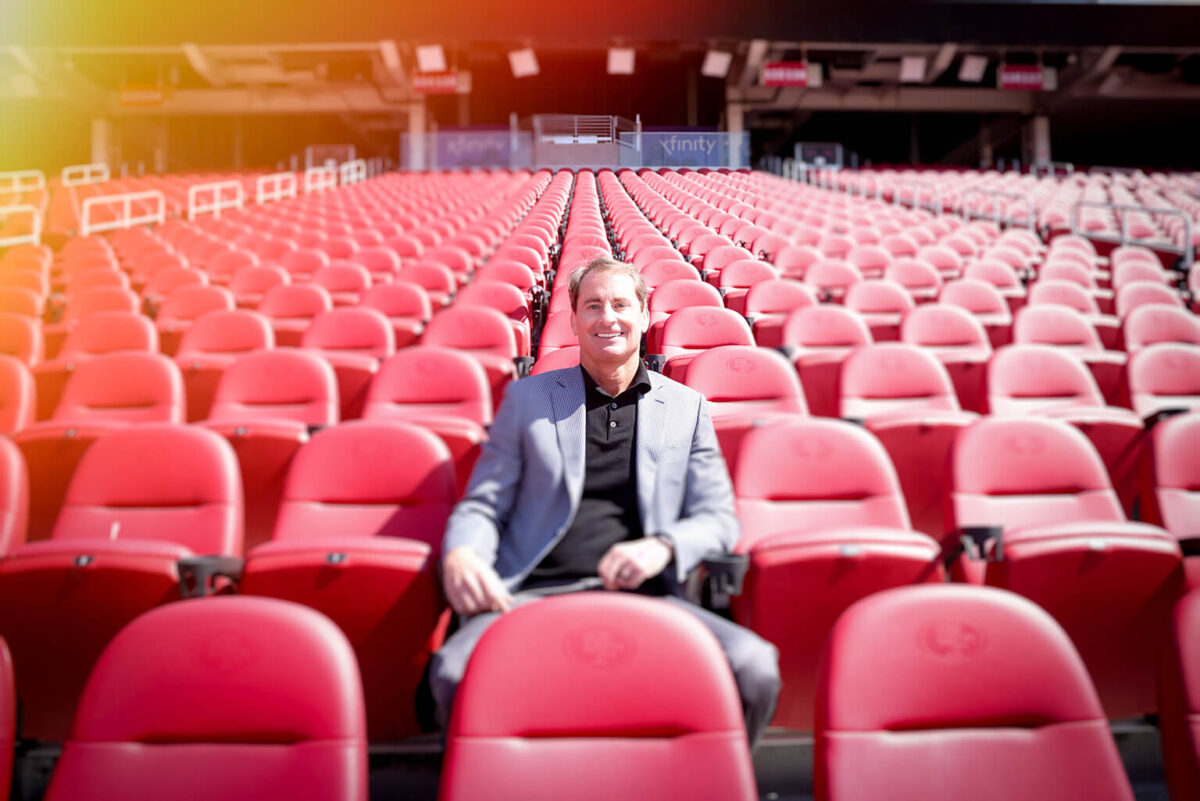Words by Johanna Harlow
Well-versed in the language of bones and joints, Stanford orthopedic surgeon Timothy McAdams listens closely to the human body. As head team physician and orthopedic surgeon for the San Francisco 49ers, he’s also tackled countless critical calls for his team over the last 16 seasons.
“That’s been both the most fun and the most stressful part of my job,” the Los Altos Hills resident says of return-to-play decisions on game day. There’s the obvious calls, sure. A slight tweak like a knee sprain where everything’s still stable gets the green light, while a complete ligament injury is clearly a no-go. “The challenging part is sometimes it’s in-between,” Tim explains. “Sometimes there can be a sprain, which you just can’t tell on exam. And sometimes, in the heat of the moment, players don’t feel pain like they might later. The adrenaline kicks in and so we really have to err on the side of caution.” In other words, Tim’s job sometimes means protecting players from themselves. “They want to play,” he continues, “but they will appreciate it later on when you make a call that’s based on true medical judgment.”
Tim, who currently serves as president of the NFL Physician Society, must also keep his cool knowing how much is on the line. “In the NFL, where there’s 16 or 17 regular season games, your decision to return a player to the game is very important,” he notes. “In major league baseball, there’s hundreds of games… You can just remove the player from the game, see the physician later on and then decide from there because missing one game isn’t as bad. But in football, it has a huge impact.”

Behind the football pros you see taking the field is a small army of caregivers. Every NFL team requires two orthopedic surgeons, a medical physician, a head athletic trainer and their assistant athletic trainers, a physical therapist, a sports performance specialist, a strength and conditioning specialist, a nutritionist and various other types of manual therapists. Plus, throw in an on-call ophthalmologist, dentist and radiologist on game days. “It really does take a village,” confirms Tim.
Before plying his trade with professional athletes, Tim aided Stanford University’s football, basketball and soccer teams. His team player attitude and initiative didn’t go unnoticed. After only seven years at Stanford, Tim was recruited to work not only with the 49ers, but also as a team physician for the SF Giants and Golden State Warriors. When the balancing act became too much, he decided to concentrate on the 49ers.
“I went into it with a little bit of trepidation,” Tim admits of the transition. Would he be subjected to financial or other stressors when determining whether players should rejoin the fray? “It couldn’t be further from the truth!” he asserts. “I can honestly say I’ve never been pressured to put someone back in the game for any reason. All of the decisions on my medical care have been mine. I wouldn’t practice any other way.” Expanding on the topic, he adds, “All of these athletes, they want to perform, yes, but they also care about their future, and so to gain their trust, they really have to know that I’m invested in their long-term health and not just how they perform at next weekend’s game.”

Photography: Courtesy of the San Francisco 49ers
An athlete himself, Tim played soccer and tennis during his time attending Bellarmine College Prep. “I’m still playing in what I call ‘the old man soccer leagues,’” he chuckles. “I think an important part of longevity is to stay active.” He also plays golf and enjoys watching his own kids take the field. “Now that I’m slowing down, I get to watch them and remember the old days.”
There’s something fatherly in the way Tim frets over post-injury 49ers returning to play. “It should be very rewarding, and at some level it is, but all I do is worry about it,” he admits. “It’s just like any parent who has a kid who comes back from an injury: always concerned that something could happen again.”
When a player does get hurt on the turf, Tim is ready on the sidelines to whisk him away to a private tent. After performing an exam and reviewing their sports injury history, Tim also scrutinizes the moment of injury on the video replay system, watching the action unfold in slow-mo to figure out how the injury occurred. Having that mechanism for review is a real game-changer. In the past, “you could see a lot of injuries better sitting on your couch than I could from the sideline,” describes Tim. “And people would say, ‘Why did you put that person back in? I could see that the knee hyperextended.’ Now with all these video systems, you can replay it from every angle and really get a good idea of how significant the injury is.”

But for Tim, the most rewarding part of the job isn’t on the field—it’s in the operating room. “Surgery is what every orthopedic surgeon will tell you they enjoy the most,” Tim says. “It really is my comfort zone. People ask me if I get anxious or nervous for surgeries. There’s a heightened focus, but it’s the most calm I am at anything.” Furthermore, “I have control of my environment, my situation, I’ve done everything so many times… I can get into the zone.”
And it’s what he’ll miss the most when he retires someday. “It is such a privilege and a joy to meet somebody and know that they’re trusting me while they’re asleep to do something to fix them so that they can thrive in their life the way they desire to. That’s a real privilege.”
That special bond between physician and player carries back to the stadium. “Players have come up to me after the lights have gone down, after everyone’s gone home, and they tell me how much they appreciated the care that I gave them during a certain game and looked out for them,” he describes with feeling. Good call, Tim. Good call.


